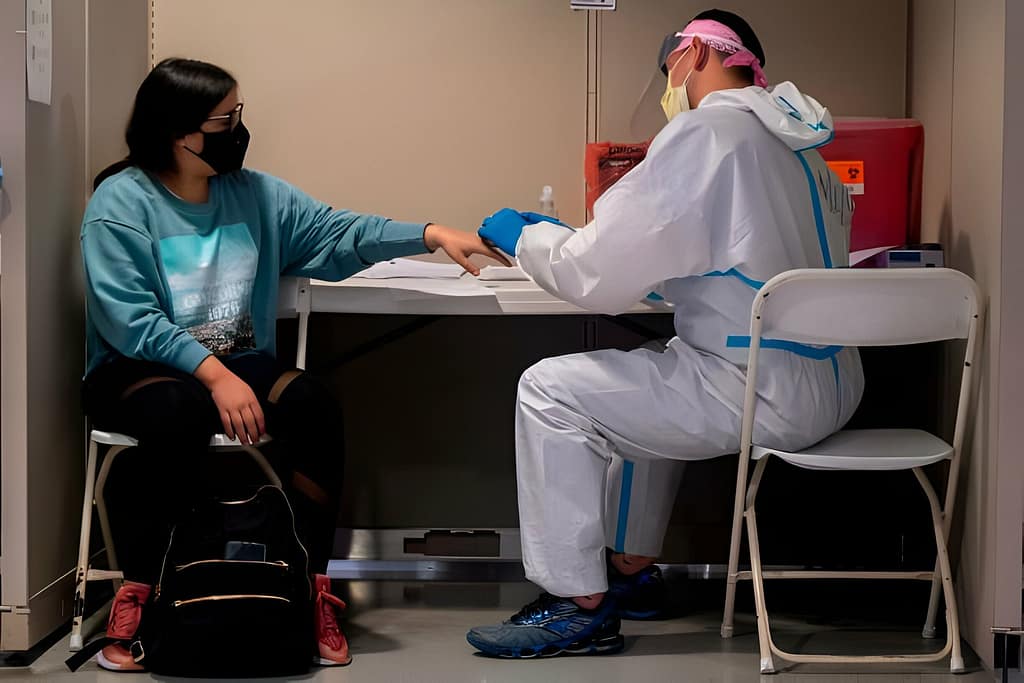The upcoming annual meeting of the World Economic Forum in Davos, Switzerland, is gaining attention, particularly due to a session titled “Preparing for Disease X.” The term ‘Disease X,’ as defined by the World Health Organization (WHO), refers to the potential of a severe international epidemic caused by a pathogen not currently known to cause human disease.
Table of Contents
Disease X: Unveiling the Unknown Threat
The WHO, led by Director General Tedros Adhanom Ghebreyesus, emphasizes the importance of acknowledging the possibility of an unknown pathogen triggering a global health crisis. This concept has sparked discussions and even controversies, with right-wing social media accounts raising concerns about vaccine mandates and alleged plans for future pandemics.
Former Trump-era Assistant Secretary for Public Affairs, Monica Crowley, took to Twitter to express baseless warnings about a supposed globalist conspiracy at the World Economic Forum, linking it to the potential emergence of a new contagion deadlier than COVID-19. However, experts in the medical and public health fields dismiss such claims, asserting that pandemic preparedness discussions are crucial for identifying strengths and weaknesses in response strategies.
Dr. Amesh Adalja from the Johns Hopkins Center for Health Security highlights that exercises and meetings focused on pandemic preparedness are not conspiracies but essential for refining response strategies and ensuring global readiness.

The Responsible Approach: Coordination and Planning
Dr. Stuart Ray, Vice Chair of Medicine for Data Integrity and Analytics at Johns Hopkins’ Department of Medicine, deems it irresponsible for world leaders not to engage in discussions about pandemic preparedness. Citing the rapid response as a lifesaver during the recent coronavirus pandemic, he emphasizes that coordination of public health responses is a responsible and necessary aspect of global planning.
Publicizing such meetings is crucial, according to Dr. Ray, as it allows for oversight, consideration of personal and economic freedoms, and an understanding of the impact on special populations. In essence, a global collaboration involving public health organizations, scientific leaders, and private individuals is seen as a sensible approach to ensuring preparedness for potential health crises.
WHO’s Priority Pathogens: Beyond ‘Disease X’
The WHO maintains a list of “priority pathogens” representing significant public health risks due to epidemic potential and a lack of sufficient countermeasures. While the list is not exhaustive, it provides insight into the pathogens that global public health officials are closely monitoring.
Ebola & Marburg Virus Diseases
Viruses causing hemorrhagic fevers, such as Ebola and Marburg, remain on the watchlist. With varying case fatality rates, these diseases pose a serious threat. While vaccines exist for the deadliest Ebola strain, Zaire, and are under development for others, Marburg lacks an approved vaccine.
Crimean-Congo Hemorrhagic Fever
Similar to Ebola and Marburg, this acute viral hemorrhagic illness transmitted by ticks and infected animals poses a risk, with a case fatality rate of around 30%.
Lassa Fever
An acute viral hemorrhagic illness with a lower case fatality rate, Lassa fever, can still be severe for the 20% of infected individuals. Rodents carry the virus, contributing to its transmission.
SARS-CoV-1 and MERS
The first and second identified killer coronaviruses, SARS-CoV-1 and MERS, highlight the ongoing concern about potential spillover events from animals to humans. While containment efforts were successful in the past, the need for ongoing vigilance remains.
COVID-19 (SARS-CoV-2)
The global COVID-19 pandemic persists, with concerns about potential variants leading to increased severity. The WHO acknowledges the need for continuous planning and response to evolving situations.
Nipah and Other Henipaviral Diseases
Nipah, a henipavirus with a high fatality rate, remains a threat. Ongoing evaluation of a vaccine by Moderna indicates efforts to counter this lethal paramyxovirus.
Rift Valley Fever
Known for causing devastation among livestock, Rift Valley Fever is closely monitored for any potential transmission to humans. While human infections are currently limited, viral evolution could pose new risks.
Zika Virus
Transmitted primarily by mosquitoes, Zika virus poses risks, particularly during pregnancy, causing congenital malformations. Ongoing surveillance is crucial to prevent and manage potential outbreaks.
The World Economic Forum’s session on “Preparing for Disease X” underscores the global commitment to proactive planning and coordination against potential future health crises. The WHO’s vigilance in monitoring priority pathogens reflects a collective effort to ensure the world is prepared to face the challenges of unknown and known infectious threats.